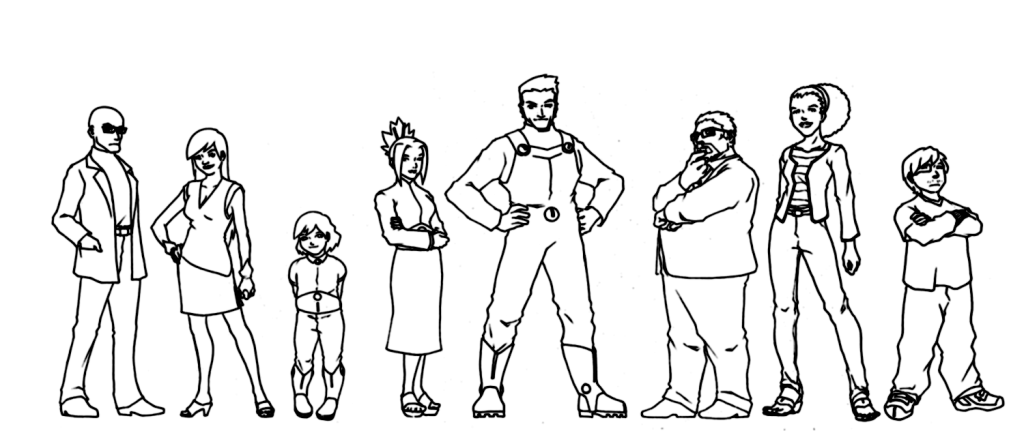We knew what we wanted to do with the personalities of the characters for Lunatics!, and we had back-stories, descriptions, and a few personal details. But we didn’t have characters, and I intentionally left some creative room there, because I felt that a real character designer could do a much better job. I had done something similar to this for a game project years back, and my first choice was to contact one of the designers who had worked on that project – Daniel Fu.
Of course, years had passed, and he’d gone on to different sorts of work. He’d also done his own online comic series with “The Retriever“. So I felt pretty lucky when he agreed to do the designs for us.

Daniel Fu has been a comic artist since before 2000. He worked together with Rosalyn and Terry on an earlier free-culture project in 2000, and so he was a natural choice for this project. He has created several graphic novels on his own, and is perhaps best known for his series The Retriever. In 2011 and early 2012, he completed design concepts and model sheets for the characters that will appear in Lunatics! Currently he designs interactive interfaces for commercial web applications.
It was a challenging problem, because I wanted to have the sets and props made to real scale. If you look at something like Pixar’s “The Incredibles“, you can see that that doesn’t really work for highly-stylized character shapes. Props have to be extensively adjusted to compensate for the different proportions of the characters. I wanted to avoid that complication.
But I also wanted to avoid the problem of the “uncanny valley“. When you have extremely realistic models of people, the audience gets really sensitive to how they move. You can see examples of how this is a problem in “Final Fantasy: The Spirits Within“, “Beowulf“, or “Animatrix: Final Flight of the Osiris“. All of these were done with photoreal characters — and actually, they pretty much look fine in stills. But it’s disconcerting to watch the animation, because of this effect. People describe it as “doll-like” or “zombie-like”. What’s more, these films achieve the level of believability that they have through extraordinarily accurate (and expensive) animation — far more than would be practical for us. There are also far worse examples of the uncanny valley effect (don’t say I didn’t warn you!).
As a rule of thumb, the more the characters look photographically real and less like drawings, the more sensitive we are to the effect. Which tends to work against the goal of having accurate proportions. Daniel’s designs therefore had to tread on a pretty fine line between the two extremes, which required expert talent, but he pulled it off very nicely!
There’s also more than one way to make a character look more stylized. Distorting the proportions (as in Pixar films) is just one option. You can also give yourself some slack by using a different style of rendering that makes the characters look more like they are drawn and/or cel-shaded. This is why 2D animation often looks “warmer” than 3D animation.
Fortunately, you can do something like that with toon-shading and Freestyle line-rendering in Blender. And although we’re not really there yet, we think this is going to be the best option with Lunatics! But it all starts with Daniel Fu’s character designs, which are just awesome:
Since then, Daniel has also been helping in the character modeling process, to try to maintain the same sense of style as these drawings are transformed into models. We’ll have more about that in our next update, where you’ll meet character modeler, Bela Szabo.



